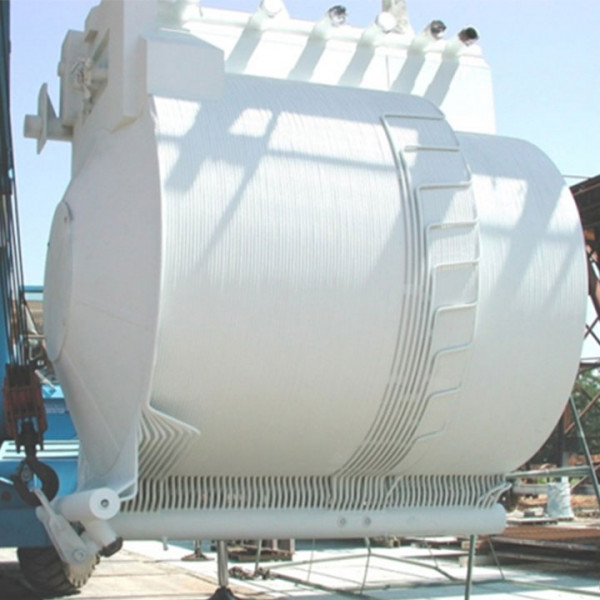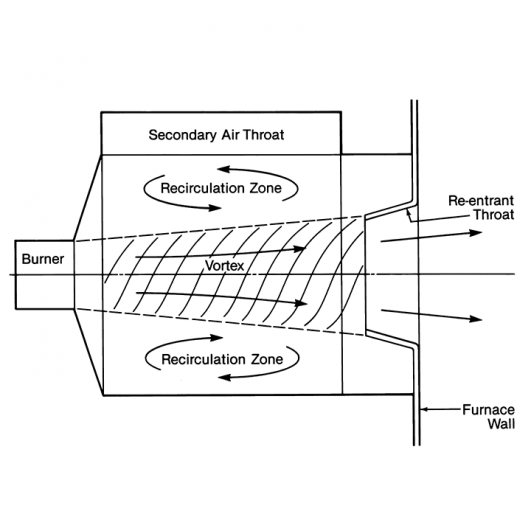Cyclone-Furnace Boilers
B&W developed Cyclone furnace technology to burn coal grades that are not well-suited for pulverized coal combustion. The ash from these coals has a very low melting temperature. This molten ash would normally be deposited on all downstream heat transfer surfaces, causing severe slagging and fouling with resultant negative impact on unit capacity, availability and reliability.
Because of the extreme conditions inside the combustion chamber, cyclone boilers sometimes experience high rates of erosion and corrosion. In the early 1980s, B&W began an aggressive development program to improve the operating life of cyclone internal surfaces through advanced materials and advanced stud patterns, as well as improved manufacturing methods.
Cyclone improvements and modifications -- including staggered pin stud placement, application of new tube routings for improved mechanical reliability, seal welded construction and redesigned tube closures at the bottom of the cyclone barrel -- have significantly extended the life of cyclone equipment.
How does a cyclone furnace work?
- Similar to natural cyclone (tornado)
- Horizontal cylinder comprised of close-spaced tubes
- Tubes inside of cylinder covered with studs and refractory
- Fuel introduced at front of cyclone through burner
- Coal disbursed into inside of cyclone where it is mixed with combustion air causing coal to ignite

